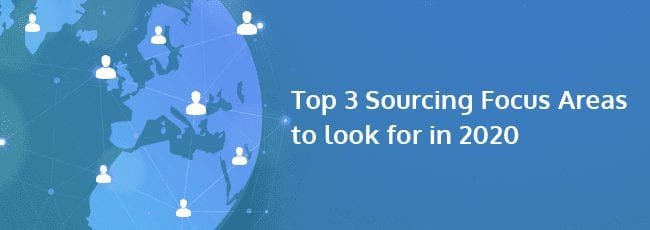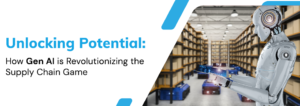As we welcome an exciting yet challenging 2020, the impact and significance of Supply Chain Optimization in the success of organizations become more evident and prominent
However, increased Globalization of Supply chain and associated geopolitics, quality, security and compliance issues continue to pose overwhelming challenges to Supply Chain professionals across the world. Not only are SCM professionals expected to overcome such challenges through innovative and proactive business processes, they are also counted upon to remain agile to quickly respond to unforeseen issues that may arise in any part of the Supply Chain.
2019 witnessed several key geopolitical events that threatened to disrupt the Supply Chain several categories between major world powers. Fearing backlash from supporters, world leaders tightened borders and businesses had to take shelter under their mitigation plans for sustenance.
While we expect this protectionist trend to continue in foreseeable future, Supply Chain professionals may as well prepare their processes, skills and systems to adapt to them.
We, at RheinBrücke, believe Supply Chain professionals can tighten and enhance their focus on the following 3 broad key areas to continue to be at the forefront of business innovation:

Inhaltsverzeichnis
ToggleDeeper Automation
Supply chain professionals need bandwidth to plan to be proactive and react to unexpected events. It means they cannot be bogged down by the regimen of routine paper-pushing activities. The feeling of getting drowned in Spreadsheets is all too common in the stressful world of a sourcing professional. Systems and processes should automate many, if not most, of the decisions, with no or minimal manual intervention or supervision. Analytics plays a key role in such automation.
Some key business processes where automation can further be improved are:
Supplier evaluation:
Systems can consolidate data from different touchpoints such as Purchase Orders, GRNs, Inspection results, APs and prepare the first draft of Supplier evaluation for Buyers to validate while making sourcing decisions. Systems can also suggest potential Suppliers for a given item based on various factors such as quality, cost, capacity, timeliness etc.
Cost estimation:
Cost estimation of custom parts is typically carried out by designated Cost estimators. Analytics has a great potential to look at historical data of commodities, tying them with market intelligence and coming up with estimated “should cost” of items.
What-If scenarios:
Coming very handy at the time of assessment of potential risks, Systems can simulate scenarios such as supply chain disruptions, exchange rate fluctuations etc. and suggest alternatives.
Seamless Collaboration
Weaker links killing the chain is no more prevalent in Supply Chain than anywhere else in the industry. In order to be agile, it is pivotal that every stakeholder, including the Suppliers, are brought on to the same platform for effective collaboration.
Who, When and Why?
Suppliers during New Product Design:
Involving potential Suppliers during NPD brings forth the potential to assess manufacturability/serviceability and complications in making the item. This has several advantages such as:
- Leveraging Suppliers’ thought leadership to add value to the process by asking the right questions and provide appropriate suggestions.
- Significant reduction in lead times.
- Significant improvement in delivery quality.
- Exploring the opportunity for cost reduction at the Supplier side earlier in the lifecycle.
Logistics in Supply chain planning & decision making:
Sourcing is no longer about the point of production and consumption, but about the complete link between the two. Engaging Logistics experts during sourcing decisions can provide an opportunity to optimize the link for better and faster sourcing impact.
Engineering in Sourcing decision making:
Typically Engineering and Procurement teams work in silos. However, Engineering can look at suggestions from Sourcing on the availability of alternate or similar parts that may result in expediting product development and exploiting volume discounts.
Sourcing Intelligence
Existing Supply chain systems and processes are designed to look at traditional sources of data within the organization and provide actionable insights to stakeholders. Predictive models have also made inroads.
The next logical step in improving the intelligence of the processes is to connect with data external to the enterprises and provide a holistic view of the supply ecosystem and context.
Potential sources of external data:
- Data from Commodity Exchanges – To look at historical data of raw materials and use them in part price predictions
- Regional / Country wise labour cost inflation – To predict labour price variations and their impact on part prices
- Supplier financial performance data – To get insights into Suppliers’ growth in the industry vs Supplier’s Share of Business and look at possible de-risking initiatives.
- Logistics costs – Impact of logistics on overall procurement costs can be significant. External inputs on evolving logistics modes and their costs can help Sourcing teams do effective What-if analysis to arrive at optimal total costs.
RheinBrücke’s MeRLIN steps into the forefront of making every stakeholder of Supply chain move forward together.






